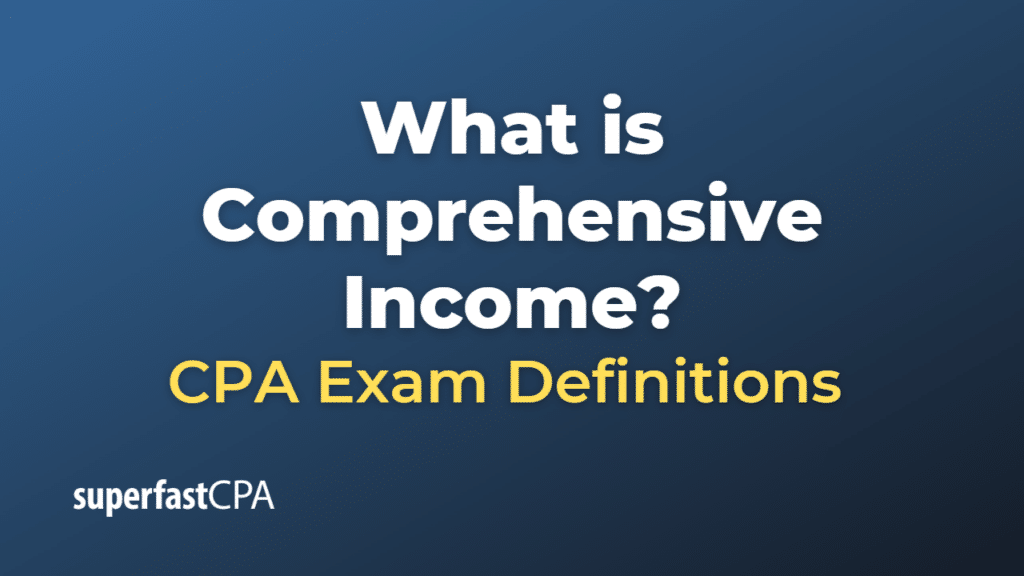Comprehensive Income
Comprehensive income is a financial metric that captures a company’s total change in equity resulting from all recognized transactions and events, including those not involving transactions with owners. Comprehensive income includes both the net income (the company’s profit or loss from its primary business operations) and other comprehensive income (OCI) items, which represent the unrealized gains and losses that are not included in net income.
Other comprehensive income items typically include:
- Unrealized gains or losses on available-for-sale securities: These are temporary changes in the value of investments in debt and equity securities that are not part of the company’s trading portfolio and are not recognized in the income statement until they are sold or otherwise disposed of.
- Foreign currency translation adjustments: These are gains or losses resulting from the translation of foreign subsidiary financial statements into the parent company’s reporting currency.
- Gains or losses on cash flow hedges: These are the effective portion of gains or losses on derivative instruments used to hedge exposure to cash flow variability.
- Gains or losses on pension and post-retirement benefit plans: These include actuarial gains or losses, prior service costs, and transition assets or obligations related to defined benefit pension plans and other post-retirement benefit plans.
Comprehensive income is reported in the company’s financial statements, either as a single performance statement that combines net income and other comprehensive income or as two separate statements: an income statement for net income and a statement of comprehensive income for OCI items. Comprehensive income helps provide a more complete picture of a company’s financial performance, as it includes all recognized gains and losses, not just those recognized in the income statement.
Example of Comprehensive Income
Let’s consider a hypothetical example to illustrate how comprehensive income is calculated for a company.
Suppose ABC Corp has the following financial data for the year:
- Net income: $500,000
- Unrealized gain on available-for-sale securities: $30,000
- Foreign currency translation adjustment: -$10,000
- Loss on cash flow hedge: -$5,000
- Gain on pension plan adjustments: $15,000
To calculate the comprehensive income for ABC Corp, we need to add the net income and all other comprehensive income items:
Comprehensive Income = Net Income + OCI Items
Comprehensive Income = $500,000 + ($30,000 – $10,000 – $5,000 + $15,000)
Comprehensive Income = $500,000 + $30,000
ABC Corp’s comprehensive income for the year is $530,000. This figure represents the total change in the company’s equity resulting from all recognized transactions and events during the year, including both net income from primary business operations and unrealized gains or losses from other comprehensive income items.
In this example, the comprehensive income provides a more complete picture of ABC Corp’s financial performance, as it includes not only the net income from primary business operations but also the effects of unrealized gains or losses on available-for-sale securities, foreign currency translation adjustments, cash flow hedges, and pension plan adjustments.













